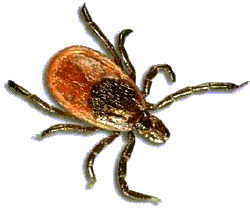|
Lyme
disease is usually diagnosed and treated based on clinical
manifestations. However, laboratory testing is useful
for patients with confusing presentations and for validation
of disease in clinical studies. Although cultivation of
Borrelia burgdorferi is definitive, prior investigations
have shown that no single test is optimal for Lyme disease
diagnosis.
We
applied high-volume blood culture, skin biopsy culture,
PCR, and serodiagnosis to a cohort of patients with suspected
Lyme disease acquired in Maryland and southern Pennsylvania.
The study was performed to confirm the relative utility
of culture and to identify laboratory testing algorithms
that will supplement clinical diagnosis.
Overall,
30 of 86 patients (35%) were culture positive, whereas
an additional 15 of 84 (18%) were seropositive only (51%
total sero- and culture positive), and PCR on skin biopsy
identified 4 additional patients who were neither culture
nor seropositive. Among 49 laboratory test-positive patients,
the highest sensitivity (100%) for diagnosis was obtained
when culture, skin PCR, and serologic tests were used,
although serologic testing with skin PCR was almost as
sensitive (92%). Plasma PCR was infrequently positive
and provided no additional diagnostic value.
Although
culture is definitive and has a relatively high sensitivity,
the results required a mean of 3.5 weeks to recovery.
The combination of acute-phase serology and skin PCR was
75% sensitive, offering a practical and relatively rapid
alternative for confirming clinical impression. The full
battery of tests could be useful for patients with confusing
clinical signs or for providing strong laboratory support
for clinical studies of Lyme disease.
Division
of Medical Microbiology, Department of Pathology, The
Johns Hopkins University School of Medicine, 720 Rutland
Avenue, Ross 624, Baltimore, MD 21205. sdumler [at] jhmi.edu.
|
